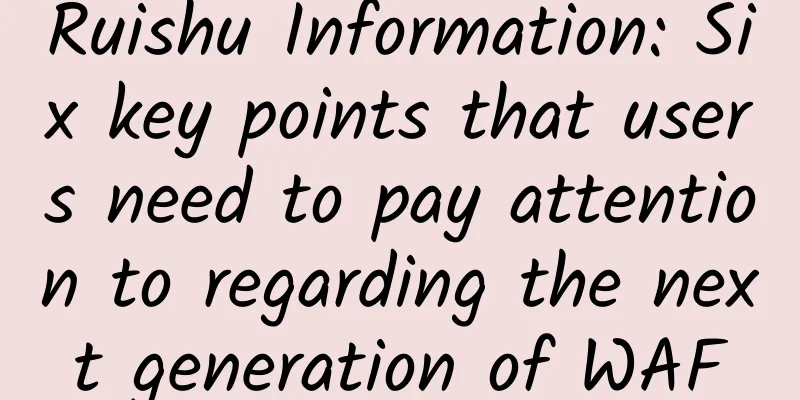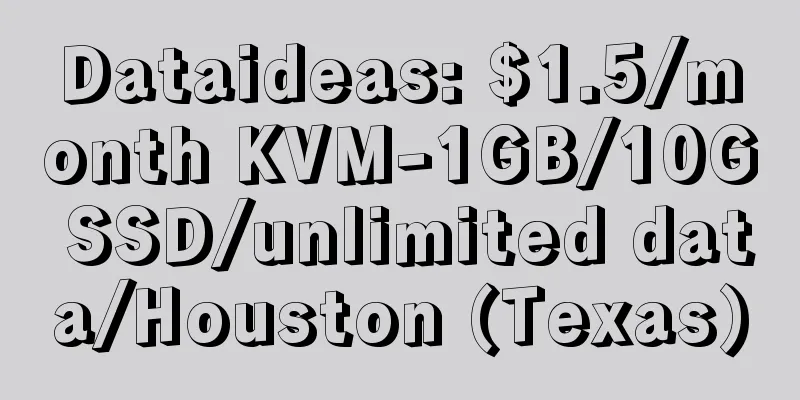Ruishu Information: Six key points that users need to pay attention to regarding the next generation of WAF

|
Ruishu's next-generation WAF - WAAP platform, with three engines working together, can easily deal with Bots attacks, 0day attacks, application DDoS attacks and API security protection while providing traditional WAF capabilities. Gartner predicts that by 2023, more than 30% of public-facing web applications and APIs will be protected by cloud web application and API protection (WAAP) services that combine distributed denial of service (DDoS) protection, bot mitigation, API protection and a web application firewall (WAF). For this reason, the next generation WAF-WAAP platform came into being. Six key points that customers should pay attention to about the next-generation WAF 01 Whether it has a high ability to identify Bots attacks Today, the number of automated attacks has exceeded human behavior traffic. According to Imperva statistics, 90% of security incidents worldwide are caused by malicious bots. As automated attack methods continue to escalate, on the one hand, automated attack tools are constantly iterating, and on the other hand, automated attacks are gradually becoming more humanized in operation and means, and hiding malicious features, making it increasingly difficult for traditional WAFs to identify and protect against bot automated attacks. Therefore, the next-generation WAF-WAAP platform should not only have the ability to identify Bot automated attacks through frequency and tool features, but also use more highly recognizable human-machine recognition and defense technologies to identify various hidden tool features and highly anthropomorphic access behaviors that bypass WAF detection. Enterprises should pay attention to the efficiency and depth of the next-generation WAF's identification of Bot traffic. 02 Does it have vulnerability protection capabilities that do not rely on patches? Despite the best efforts of developers and IT security teams, most applications have vulnerabilities. Data shows that more than 83% of scanned sites have at least one vulnerability, and 20% of sites were found to have a "critical" vulnerability, which makes it easy for hackers to exploit the vulnerability to access sensitive data or change website content. Worst of all, the average time it takes to fix a vulnerability is 59 days, which leaves applications exposed to attacks for too long. In addition to the cost and time issues of fixing vulnerabilities, vulnerabilities in legacy applications may have not been touched for years, and it may be difficult to find application vendors to obtain patches. Therefore, the next-generation WAF-WAAP platform must be able to detect and exploit known vulnerabilities and 0day vulnerabilities without relying on patches, and provide more proactive threat protection through dynamic technology, intelligent threat analysis technology and other means. 03 Can you identify fake and fraudulent traffic? Compared with traditional application vulnerabilities, logic vulnerabilities are difficult to detect and protect. When attackers perform illegal operations, traditional WAFs cannot identify these seemingly normal operations. When attackers use increasingly common business logic vulnerabilities to initiate unauthorized operations, swipe orders, simulate login operations, etc., how can WAF distinguish whether this is the work of an attacker or normal user behavior? Therefore, the next generation WAF-WAAP platform should not only have the ability to identify humans and machines, but also be able to distinguish malicious attacks, abnormal business traffic, and repeated attacks such as DDos through traffic learning and intelligent behavior analysis technology, and prevent network attacks without blocking legitimate traffic. 04 Can you proactively defend yourself against hackers? As the offensive and defensive battles escalate, hackers continue to create new attack tools, hone existing technologies, recruit gangs to commit crimes together, and constantly pose new threats to applications. They can even bypass the feature inspection functions of traditional WAFs through rich syntax and parameter deformation, traffic encryption, etc. Based on this, the next generation WAF-WAAP platform should have the latest active defense technology to defeat the escalating network threats and fight hackers through emerging technologies such as dynamic security, machine learning and intelligent analysis models, threat intelligence, etc. It can timely detect and block attackers when they scan and detect vulnerabilities, identify fraudulent behaviors in a timely manner, and realize business risk control in advance. 05 Can it be deployed in multiple forms? In the digital age, enterprise IT forms are diverse, and applications may be deployed locally, on the cloud, or even in a hybrid environment. Therefore, the next-generation WAF-WAAP platform should support a variety of deployment forms, including reverse proxy, transparent deployment, mirror deployment, and plug-in deployment, to meet the deployment needs of various user scenarios. At the same time, it should support cluster multi-node deployment to meet the protection needs of users' massive business traffic. 06 Can it support multiple applications? As business access channels such as Web, APP, API, WeChat, and mini-programs become more and more abundant, the next-generation WAF-WAAP platform should also be able to support multiple applications to meet the needs of users in any Web scenario and achieve full business channel protection. In addition, through full access records and multi-dimensional correlation analysis, the data of various business access channels should be integrated to achieve user access data tracking and perspective, and achieve unified management of Web security integration. Today, digital applications have become an essential tool to drive the rapid development of enterprises. In order to fully protect these critical business resources, enterprises need a powerful WAF product more than ever before. Based on this, Ruishu Information fully leverages the professional advantages of dynamic security technology and Bots automated attack protection capabilities to launch the next-generation WAF - WAAP platform, which uses the three engines of "dynamic security engine" + "intelligent threat detection engine" + "rule engine" to work together, while providing traditional Web security defense capabilities, helping customers deal with emerging and rapidly changing Bots attacks, 0day attacks, application DDoS attacks and API security protection. It breaks through the bottleneck that traditional WAFs are difficult to deal with complex and hidden automated attacks, and directly points to the pain points of the current attack and defense battle. There is no doubt that Ruishu's next-generation WAF - WAAP platform is a powerful tool for today's integrated Web security defense. |
<<: 5G brings precise positioning to the Internet of Things
>>: Get ready for Industry 4.0 with 5G and native AI
Recommend
Bluetooth, WiFi and Zigbee: Which wireless technology is better?
Wireless technology is all the rage these days! F...
The embarrassment of 5G network: the speed is slower than a year ago, and millimeter wave is difficult to popularize
On May 7, 5G networks, as a new generation of mob...
What is 5G? How is it better than 4G?
[[264309]] 5G networks will increase wireless net...
[Black Friday] GreenCloudVPS: Multi-room 3G memory KVM only $28/year, 1TB large plate chicken starts at $52 for two years
GreenCloudVPS's Black Friday event has begun....
Mushroom CarLink launches an integrated Internet of Vehicles solution to provide users with a seamless "people-car life"
Several years ago, a company proposed a relations...
There are four major challenges in the development of 5G. The next 2-3 years will be a critical period for the development of 5G.
A total of more than 700,000 5G base stations hav...
Very comprehensive! A comparison of the financial and operating data of the three major operators in the first quarter
Recently, the three major operators have announce...
5G Technology: The Future of Smart Homes and Cities
The world is moving towards a more connected futu...
Powered by EMUI 9.1, Huawei Enjoy 10S brings users a brand new smart experience
In the era of information explosion, consumers ar...
Wi-Fi 6 Column | Is Wi-Fi 6 omnipotent?
Wireless networks have been around for a long tim...
JuHost: Hong Kong VPS limited 40% off starting from $2.99/month, 1G memory, 20G SSD, 1TB monthly traffic
Last month, I shared information about JuHost, a ...
NASA to launch laser communications relay demonstration mission this year
According to foreign media, NASA has a mission ca...
2020 IT Salary Survey: What are the higher-paying positions?
According to data from research and consulting fi...
20 industries that 5G technology can change
5G is changing the way we connect. The technology...
Discussion on 5G+4G wireless network collaboration and key networking technologies
Labs Guide This article starts with analyzing the...









